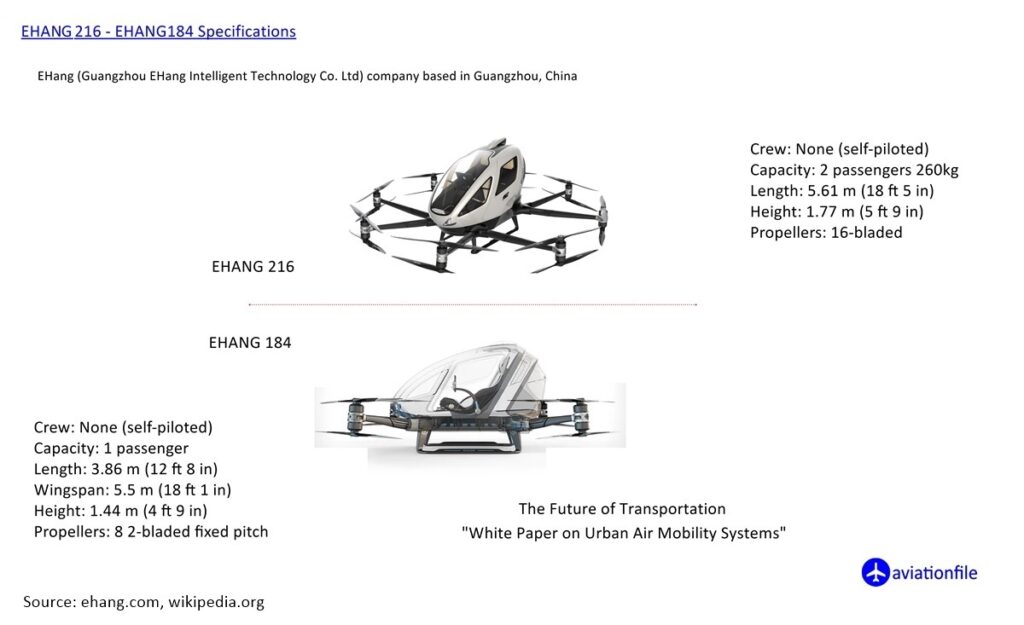EHang 216 passenger-carrying UAV
The EHang 216 drone is a passenger-carrying unmanned aerial vehicle (UAV) developed by Chinese company EHang. The drone is capable of transporting two passengers weighing up to 260 kg for a maximum distance of 35 km on a single charge of its electric battery.
One of the key features of the EHang 216 is its autonomous flight capabilities. The drone is equipped with a number of sensors and cameras that allow it to navigate and avoid obstacles without the need for human intervention. The passenger simply inputs the desired destination into the drone’s interface, and the vehicle takes care of the rest.
Ehang 216 Specifications

In addition to its autonomous capabilities, it is designed with safety in mind. The vehicle is equipped with multiple backup systems for its power and control systems, ensuring that it can continue to fly even if one of its systems fails. Additionally, the drone’s rotors are encased in a protective cage to prevent any potential accidents.
The EHang 216 is also designed for comfort and convenience. The cabin of the drone is spacious and equipped with air conditioning, allowing passengers to travel in comfort. Additionally, the vehicle’s quiet electric motors ensure a peaceful and smooth ride.
Despite its advanced technology and safety features, the EHang 216 is still in the early stages of development and commercialization. The company has conducted a number of test flights and has received approval for limited commercial use in several countries, but widespread commercial use is still some ways off.
In conclusion, the EHang 216 drone represents a significant step forward in the development of passenger-carrying UAVs. With its advanced technology, safety features, and passenger-focused design, it has the potential to revolutionize the way people travel in the future. However, as with any new technology, there are still some challenges that need to be addressed before it becomes widely adopted, such as regulatory approval, public acceptance, and commercial viability.
source:
https://www.ehang.com/ehangaav/


